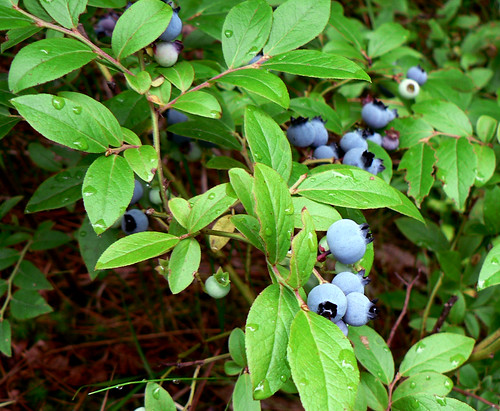 |
| Wild blueberries Vaccinium corymbosum |
Blueberries were my first wild food, and have remained my most constant.
As a boy, growing up here in New England, I sought them in the pine and oak woods around my father’s house. Small, sweet, and dusty blue, they hung in clusters, concealed by the leaves of the ground-hugging bushes. With a quart container filled, I would head back to the house, where my father mixed them into pancake batter, dropped by the ladleful onto a sizzling griddle.
In my twenties, as a vegan, I continued to pick them and savor the fullness of their taste.
Even today—when the wild foods in our kitchen include everything from white-tailed deer and fiddleheads to chanterelles and indigo milk caps—there is something special about stumbling onto a patch of blueberry bushes.
Heavy with fruit, they might cling to crevices in the rocky hillside my wife and I have been hiking. On a warm summer day, the berries come as unexpected gifts: morsels of transmuted earth, sun, and soil. I dig a plastic bag out of my pack and we start picking and snacking. Half an hour and two quarts later, we’ve hardly made a dent.
Walking away, we talk about what we’ll make with them. Yes, I’ll make some pancakes. Yes, Cath will make a batch of jam. Assuming enough berries make it back to the kitchen.
Danny: Blueberries are native to North America. They are often confused with the European bilberries, which while similar in appearance and taste, are a different species. While blueberries are obviously essential for muffins and pancakes, a recent study has indicated that daily blueberry consumption can improve memory functioning, at least in older adults with impaired memory.
Thanks so much, Danny!
ReplyDeleteI didn't know that blueberries were only native to this continent. Interesting!